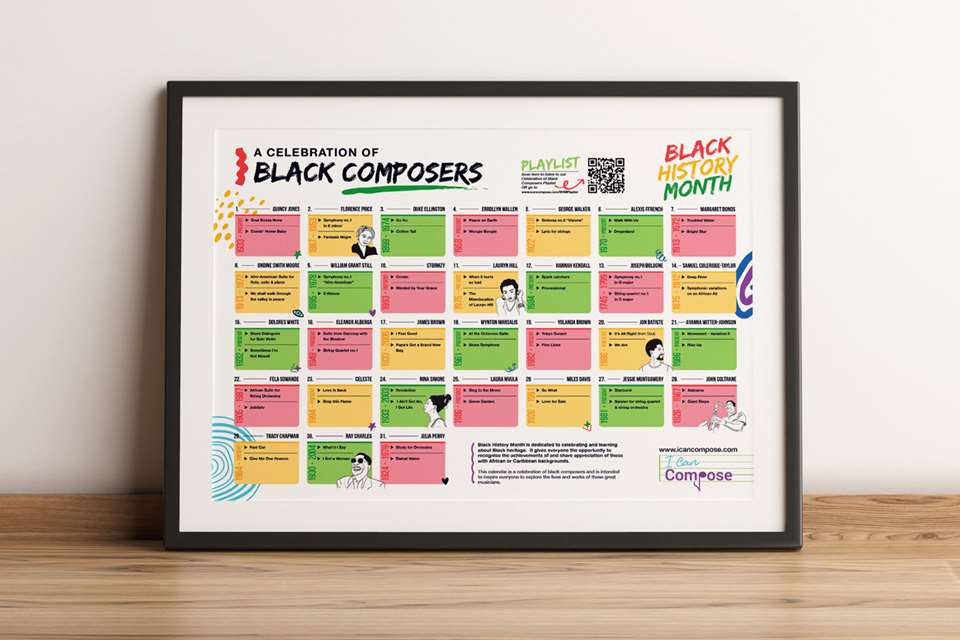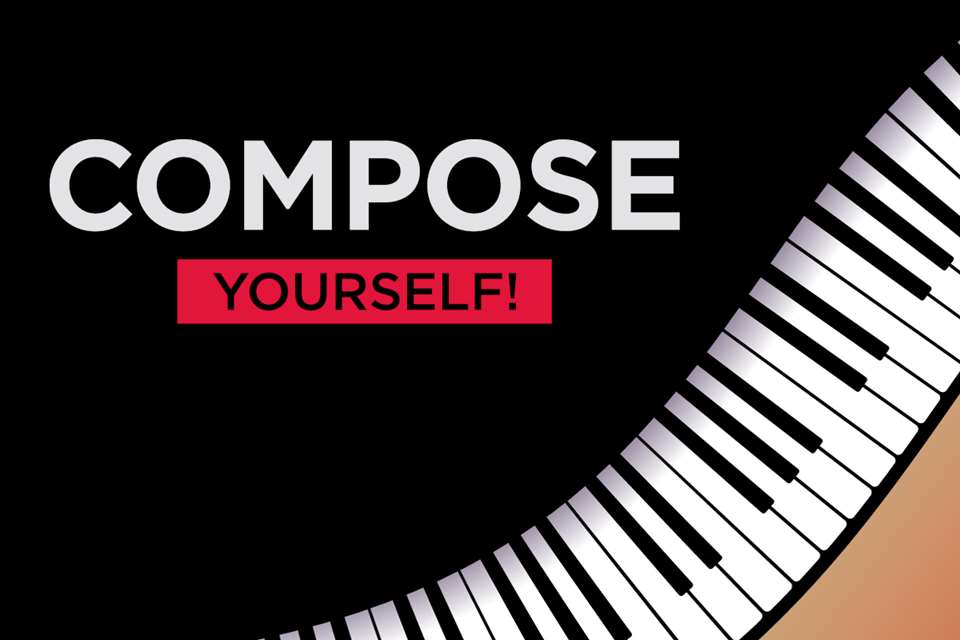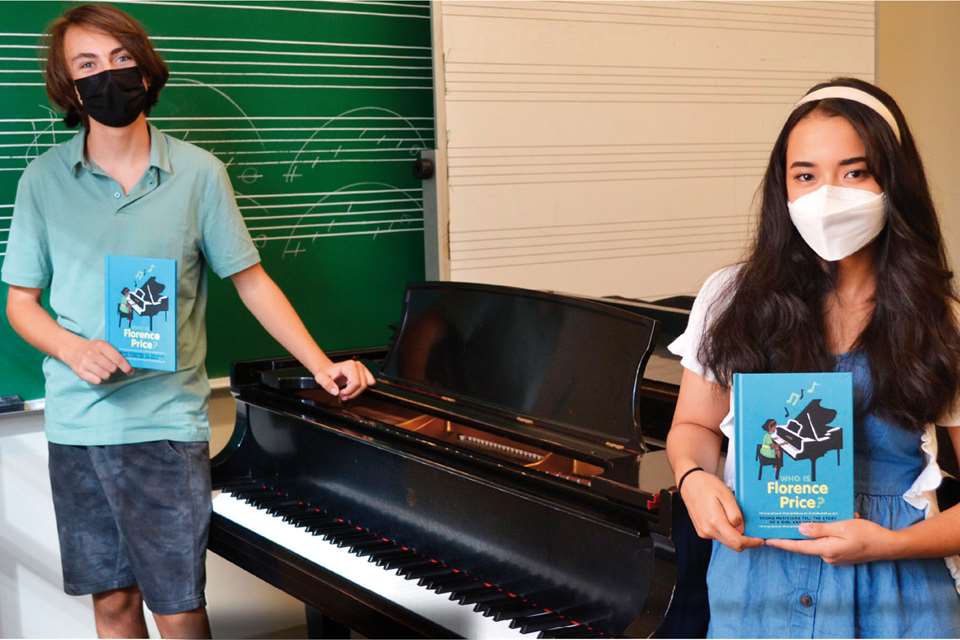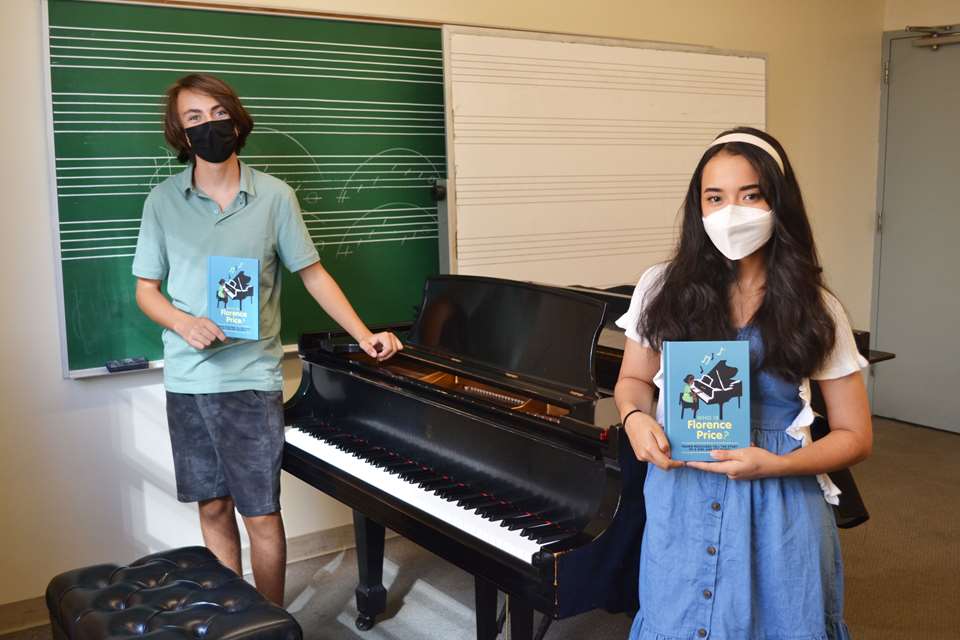A composer a day: Women's History Month Listening Calendar
Harriet Clifford
Tuesday, March 1, 2022
To mark Women's History Month this March, Rachel Shapey from I Can Compose has been busy creating an innovative musical resource for students, finds Harriet Clifford.
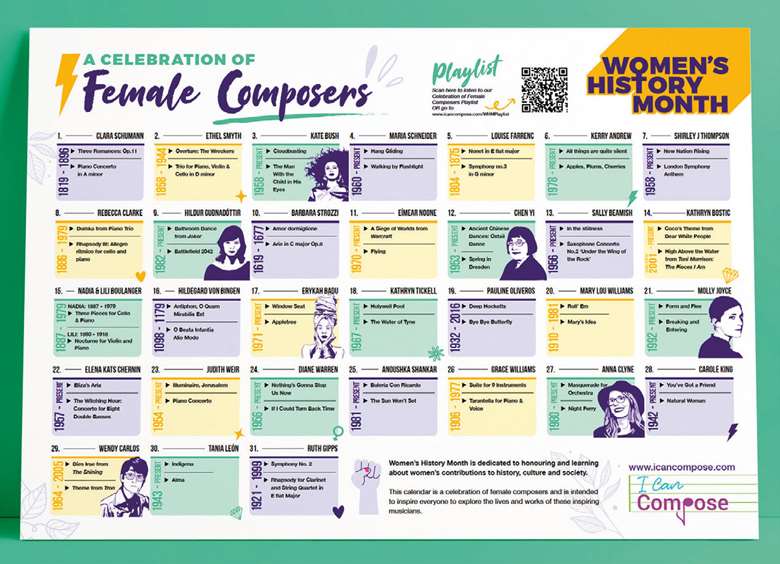
HC: Can you introduce the new resource?
RS: The latest resource for I Can Compose is a Women's History Month Listening Calendar. There are 32 female composers (the Boulanger sisters share a day!) with two suggested pieces that can be found on a dedicated Spotify playlist. Anyone can download the calendar, but the idea behind it is to inspire students and prompt them to explore the music of some composers they may not be familiar with. We want students to have strong musical role models and be able to identify with the composers so that they might think, ‘yes, I can compose, just like her’. You'll find a variety of musical styles, nationalities, composers of colour, and LGBTQ+ and disabled musicians. There are two versions available: a free A4 download and an A2 printed poster to order (UK only).
HC: This is I Can Compose's second listening calendar, the first being for Black History Month in October. Were you surprised by the reach of that calendar?
RS: I'm thrilled that we had nearly 1,000 downloads of the Black History Month Listening Calendar. As more and more teachers downloaded the resource, I realised that this was something that was really needed in the classroom.
HC: How do you hope that this new calendar will be used by teachers?
RS: I hope that it will be a fun starting point for highlighting some trailblazing female composers. Many teachers said they had enjoyed discovering some new composers alongside their students during Black History Month. The simplicity of the calendar means that it can be used in lots of different ways: sharing the playlist with colleagues and students, prompting discussions, creating material for a display, and in-class or at-home listening and research tasks – there are lots of possibilities.
HC: From what you may have seen or heard, what was your favourite way that the first calendar was used with students?
RS: Several teachers told me how they had distributed the calendar to colleagues and a copy was on the wall of every classroom in the school! I visited a number of schools in October and saw it for myself – just brilliant! One teacher contacted me to share how one of her students, who was normally quite detached and withdrawn, had really engaged with the calendar and initiated conversations about the different musicians. He had gone home and listened to them and told her about it the next day. That's what it's all about.
HC: How do we reduce the risk that children could start to think of woman composers or Black composers as people to take note of only during these celebration months?
RS: I view these celebration months as a basis for exploring new or less familiar music. The Black History Month Listening Calendar was presented as ‘31 days of inspiring music for October and beyond’ because my vision was to not only get people listening to these great composers, but to keep listening. I think there's a responsibility on us as educators to embed the music of under-represented composers alongside that of more well-known musicians. However, it can be difficult to find recordings of many minority composers. This is a wider issue that is starting to be addressed thanks to particular soloists and ensembles performing lesser-known works.
The Women's History Month Listening Calendar can be found at www.icancompose.com/WHM.


